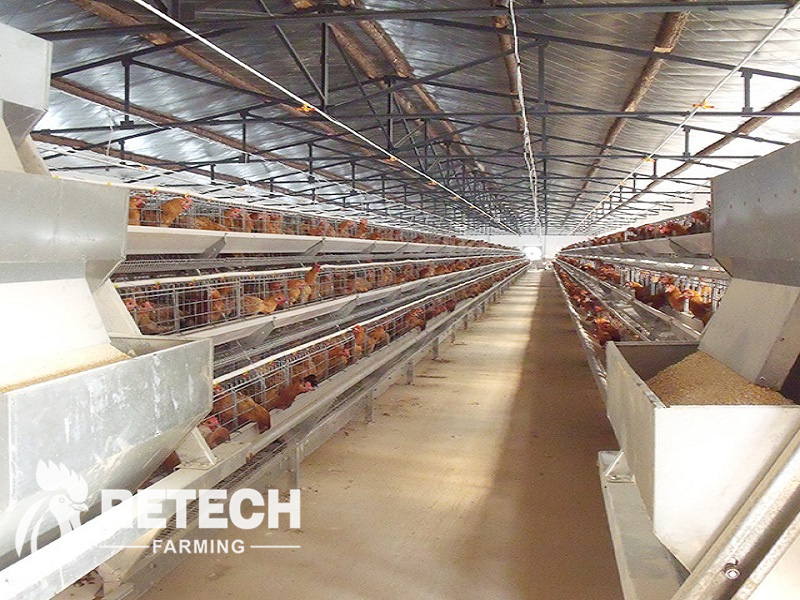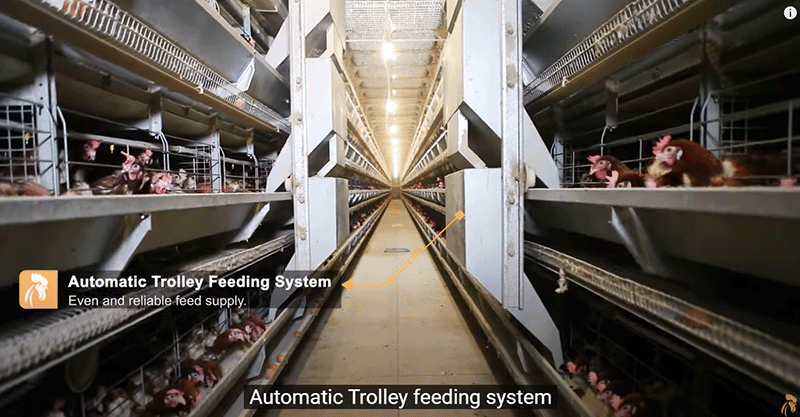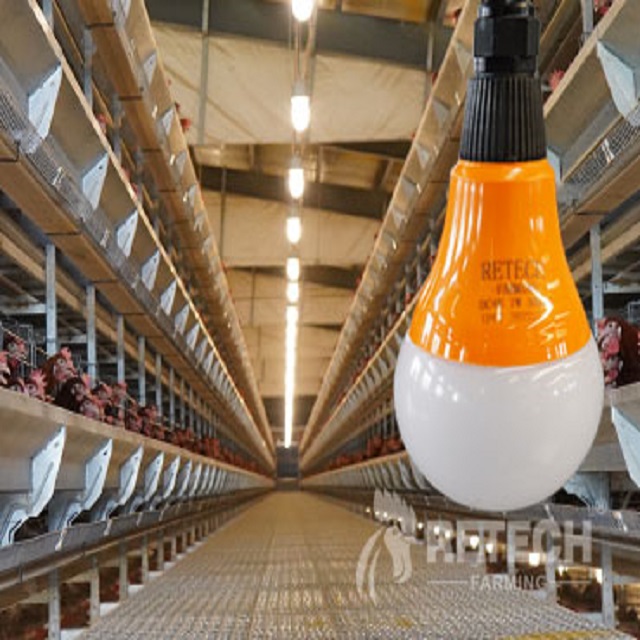در صنعت رقابتی تولید تخم مرغ، مصرف کنندگان به طور فزاینده ای نگران کیفیت و ماندگاری تخم مرغ هستند. مصرف کنندگان تخم مرغ های تازه و خوشمزه با ماندگاری طولانی می خواهند. این امر مستلزم یک محیط مرغداری تمیز و بهداشتی و تولید تخم مرغ بالا است.
تجهیزات مدرن سود تخم گذاری را بهبود می بخشد
روشهای سنتی اغلب در ارائه مداوم تخممرغهایی با کیفیت برتر و ماندگاری طولانی مشکل دارند.
با این حال، تجهیزات مدرن مزایای قدرتمندی را ارائه میدهند:
1.سیستمهای کنترل خودکار محیطی
دما، رطوبت و تهویه نقش حیاتی در کیفیت و ماندگاری تخممرغها دارند. تجهیزات مدرن، کنترل دقیق محیطی را برای ایجاد شرایط ایدهآل برای تولید تخممرغ فراهم میکنند. این امر استرس روی مرغها را به حداقل میرساند، خطر ترک خوردن یا آسیب دیدن تخممرغها را کاهش میدهد و رشد تخممرغ را تقویت میکند.
۲. سیستمهای تغذیه و آبیاری خودکار
دسترسی مداوم به خوراک با کیفیت بالا و آب تمیز برای تولید مرغهای سالم و پربازده ضروری است. سیستمهای خودکار تضمین میکنند که مرغها مقدار مناسب خوراک و آب را در زمان مناسب دریافت میکنند، ضایعات را به حداقل میرسانند و تغذیه را بهینه میکنند. این امر مستقیماً بر کیفیت تخممرغ تأثیر میگذارد و منجر به تخممرغهای بزرگتر، خوشمزهتر و با ماندگاری طولانیتر میشود.
۳. جمعآوری و دستهبندی خودکار تخممرغ
سیستمهای مدرن جمعآوری تخممرغخطر آسیب یا کبودی را کاهش میدهد و تضمین میکند که تخممرغها سالم به کارخانه فرآوری میرسند. سپس سیستم مرتبسازی خودکار، تخممرغها را بر اساس اندازه و کیفیت درجهبندی میکند و هرگونه مشکل احتمالی را قبل از رسیدن تخممرغها به دست مصرفکنندگان برطرف میکند. این امر ضایعات را به حداقل میرساند و تضمین میکند که فقط تخممرغهای با بالاترین کیفیت میتوانند وارد بازار شوند.
۴. انبارداری و جابجایی کنترلشده
سیستمهای مدرن ذخیرهسازی و جابجایی، دما و رطوبت بهینه را حفظ میکنند، روند پیری طبیعی را کند کرده و ماندگاری را افزایش میدهند. این امر خطر فساد را کاهش میدهد و تضمین میکند که تخممرغها برای مدت طولانیتری تازه و خوشمزه باقی بمانند.
تأثیر سیستم روشنایی
۳.۱ تأثیر سیستم روشنایی مرغهای تخمگذار بر کیفیت تخممرغها
سیستم روشنایی مرغهای تخمگذارمیتواند تأثیر قابل توجهی بر کیفیت تخممرغ داشته باشد. اولاً، زمان روشنایی بر تولید و کیفیت تخممرغ تأثیر میگذارد. مطالعات نشان دادهاند که حفظ زمان روشنایی مناسب میتواند تولید و کیفیت تخممرغ را بهبود بخشد. ثانیاً، شدت نور نیز بر کیفیت تخممرغ تأثیر میگذارد. شدت نور مناسب میتواند اشتها و فعالیت مرغها را افزایش دهد، تولید تخممرغ مرغها را افزایش دهد و سختی و رنگ پوسته تخممرغ را بهبود بخشد. در نهایت، رنگ نور نیز ممکن است بر کیفیت تخممرغ تأثیر بگذارد. مطالعات نشان داده است که نور گرم باعث افزایش تولید تخممرغ مرغهای تخمگذار میشود، در حالی که نور سرد باعث کاهش تولید تخممرغ مرغهای تخمگذار میشود.
۳.۲. پیشنهادهای کاربردی برای سیستم روشنایی مرغهای تخمگذار
۱. زمان روشنایی:
زمان روشنایی مناسب باید ۱۶ تا ۱۸ ساعت در روز باشد که میتواند ترشح هورمونهای تخمگذاری در مرغها را تحریک کرده و رشد و تولید تخم مرغ را افزایش دهد.
۲. شدت نور:
شدت نور مناسب باید ۲ تا ۴ وات در هر متر مربع باشد که میتواند سلامت جوجهها را تضمین کند، تولید تخم مرغ را افزایش دهد و سختی و رنگ پوسته تخم مرغ را بهبود بخشد.
۳. رنگ روشن:
رنگ نور مناسب باید نور گرم باشد که میتواند اشتها و حرکت مرغ را افزایش دهد و تولید تخم مرغ را افزایش دهد.
ایمیل:director@retechfarming.com
زمان ارسال: 5 جولای 2024










